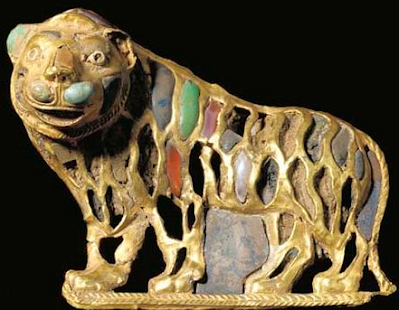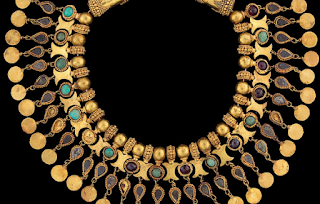

 | The treasure remained safe due to the efforts of one man: Mr. Ameruddin Askarzai, a security guard of the central bank who has been guardian of the vaults for 30 years. He is one of the few people to have seen the entire collection. "It's the best heritage of our country," he said.
Mr Askerzai helped to seal the treasure in seven trunks and guarded it along with the assets of the central bank - gold bars the "size of your arm" worth about £50 million - also kept in the presidential palace. The real threat to the treasure came when the Taliban captured Kabul in 1996. A delegation of 10 mullahs arrived with a jeweller to inspect the vaults. A pistol held against his head, he opened the combination lock so they could inspect the gold bars. |  |
They had found the second prize, but did not realize the real treasure was in a vault above their heads. The Taliban asked if there was any other gold, but Mr Askerzai remained silent. He was imprisoned for three months and 17 days, during which he was beaten and tortured, but he did not reveal anything. "I wasn't scared," he said. "I didn't care for my life. They were foreigners. They were not Afghans."
On the Taliban's last night in power, as coalition forces pounded the country with bombs, the Taliban stuffed the central bank's cash reserves into tin trunks and arrived at the vault for the gold bars. They spent four hours trying to open the vault. Mr Askerzai watched. Unknown to them, five years earlier he had broken the key and left it in the lock. The Taliban gave up and fled Kabul as Northern Alliance forces edged closer. That saved the treasure. In 2003 the vault was opened. Since then, the National Geographic Society has catalogued the collection, which appears to be complete. Also witnessing the re-opening was the archaeologist who originally found the hoard, Viktor Sarianidi. In 2003 the vault was opened. Since then, the National Geographic Society has catalogued the collection, which appears to be complete. Also witnessing the re-opening was the archaeologist who originally found the hoard, Viktor Sarianidi. |






 Gold and turquoise crown from tomb six at Tillya Tepe, dating to 25-50 CE.
Gold and turquoise crown from tomb six at Tillya Tepe, dating to 25-50 CE. 
























No comments:
Post a Comment